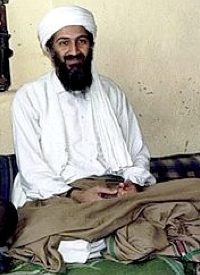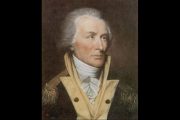
Questions about President Obama’s ever-changing narrative on Osama bin Laden’s reported assassination and rampant speculation that at least some Pakistani officials may have been involved in hiding the terrorist leader have been swirling around the internet in recent days. But there’s another important angle that has received less attention: Assuming bin Laden really was killed over the weekend — his death has been reported on numerous occasions by credible sources since 2001 — how could it take so long for the most powerful governments in the world to find one man?
The U.S. surveillance apparatus has the ability to track and monitor just about everything. It possesses the most expensive and sophisticated technology in the world, capable of tracking down everything from the origin of a steak at the grocery store to a telephone call in the most remote desert on earth. Is it possible that one of the most recognizable men on the planet — a former U.S. asset whose soldiers were armed and trained by the U.S. government — could have eluded detection for more than a decade? If so, how?
The answer, as with almost everything about bin Laden, is rife with mystery, uncertainty, and misinformation. Numerous authorities have claimed that bin Laden was assisted by various governments. And as The New American reported on May 3, the bulk of the accusations are currently being leveled at officials in Pakistan.
But others believe any culprits responsible for helping — or at least allowing — bin Laden to escape capture could be much closer to home. And an impressive amount of evidence would seem to point in that direction, too. Reporter and author Paul Joseph Watson, among others, compiled a large sample of sources, including some from the federal government itself, that lend credence to the possibility.
After the 1998 U.S. embassy bombings in Africa that were blamed on bin Laden got him placed on the FBI‘s Most Wanted list, but before the September 11 attacks, American authorities had him in their sights at least three times, according to the U.S. government’s National Commission on Terrorist Attacks Upon the United States. But each time bin Laden was within reach, some excuse was offered as to why nothing was done.
And after 9/11, the pattern persisted. U.S. forces had bin Laden cornered in the mountains of Tora Bora after the United States and NATO invaded Afghanistan in late 2001. It would have been a relatively simple matter to capture the trapped terrorist. But to the surprise of analysts, American forces and others, bin Laden was allowed to escape unscathed.
A Senate report explains some of the details in its summary. With bin Laden trapped, “calls for reinforcements to launch an assault were rejected. Requests were also turned down for U.S. troops to block the mountain paths leading to sanctuary a few miles away in Pakistan,” the document states. “The vast array of American military power … was kept on the sidelines.”
And according to the Senate report, the decision not to get bin Laden or even stop him from escaping was made by then-Secretary of Defense Donald Rumsfeld and his top commander, Gen. Tommy Franks. Despite subsequent Bush administration protestations to the contrary, “the review of existing literature, unclassified government records and interviews with central participants underlying this report removes any lingering doubts and makes it clear that Osama bin Laden was within our grasp at Tora Bora,” the Senate report concluded.
It all happened again in August of 2007, according to retired Army Colonel David Hunt. In a piece for Fox News, Hunt asserted that the U.S. government was watching bin Laden as he traveled in a convoy.
“We had his butt, on camera, on satellite. We were listening to his conversations. We had the world’s best hunters/killers — Seal Team 6 — nearby. We had the world class Joint Special Operations Command (JSOC) coordinating with the CIA and other agencies. We had unmanned drones overhead with missiles on their wings; we had the best Air Force on the planet, begging to drop one on the terrorist. We had him in our sights; we had done it,” Hunt wrote. “Unbelievably, and in my opinion, criminally, we did not kill [Osama] bin Laden.”
Hunt suggested incompetence was to blame. Other observers, however, have charged that more sinister motives were behind the apparently startling revelations that bin Laden has consistently been allowed to escape. Rep. Maurice Hinchey (D-N.Y), for example, accused then-President George W. Bush of “intentionally” allowing bin Laden to elude capture to justify the invasion of Iraq. Some analysts even suggested U.S. intelligence has known all along where bin Laden was because, contrary to popular belief, he may have still been an American asset.
George W. Bush eventually announced in 2006 that bin Laden was no longer a priority — “if he’s alive at all.” But during Obama’s speech announcing the supposed extrajudicial assassination, the president said he ordered his CIA boss to make capturing or killing bin Laden the agency’s “top priority.”
Then, last August, according to Obama, he was briefed on a “possible” lead. “It took many months to run this thread to ground,” he claimed during his May 1 speech. “Finally, last week, I determined that we had enough intelligence to take action.”
It was unclear why exactly it took so long to raid the compound, especially when the U.S. government has become famous for dropping bombs first and asking questions later. Unfortunately, the administration has offered little in the way of explanations — even as it continues to alter its narrative about bin Laden’s assassination.
The whole truth about how bin Laden managed to avoid capture for more than a decade — assuming he really was still alive — may never be publicly known. But as questions and suspicions continue to mount, analysts expect that pressure for answers will likely grow stronger.



